Advancing Conservation - Role of Modern Technologies
In today's world, where environmental challenges loom large, the role of modern technologies in conservation has become more crucial than ever. Imagine a world where we can protect endangered species, monitor habitats, and engage communities—all with the help of cutting-edge tools! This article explores how these technologies are transforming conservation efforts, enhancing biodiversity protection, and promoting sustainable practices through innovative tools and strategies that engage communities and stakeholders.
As we dive deeper into the topic, it's essential to understand that technology is not just a luxury; it’s a necessity for effective conservation. With the rapid advancement of tools like remote sensing, drones, and artificial intelligence, conservationists are equipped with the means to gather data, analyze ecosystems, and implement strategies that were once thought impossible. These tools not only enhance our ability to monitor wildlife but also allow us to involve local communities in meaningful ways, fostering a sense of stewardship and responsibility toward the environment.
One of the most exciting aspects of modern conservation technology is its ability to bridge the gap between science and community involvement. By leveraging mobile apps and social media, conservationists can engage the public, making them a part of the solution. This shift from a top-down approach to a more inclusive model encourages collaboration and empowers individuals to take action in their own backyards. After all, when communities are informed and involved, the impact is far greater than any single organization could achieve alone.
The future of conservation is bright, and with the integration of modern technologies, we are not just observing changes; we are actively participating in the restoration of our planet. As we explore the various technological advancements in the following sections, keep in mind the profound implications these tools have on our ability to protect the Earth’s precious biodiversity.
Remote sensing technologies enable conservationists to monitor ecosystems and wildlife populations from afar, providing critical data for informed decision-making and effective resource management. By using satellite imagery and aerial surveys, conservationists can track changes in land use, deforestation rates, and even the health of specific habitats. This data is invaluable for creating targeted conservation strategies and ensuring that resources are allocated efficiently.
Drones offer a revolutionary approach to wildlife monitoring, allowing researchers to collect data in hard-to-reach areas while minimizing human impact on sensitive habitats. These unmanned aerial vehicles (UAVs) can cover vast areas quickly and efficiently, capturing high-resolution images and videos that provide insights into animal behavior, population dynamics, and habitat conditions.
The use of drones in conservation presents numerous benefits, including:
- Cost-effectiveness: Drones are often more affordable than traditional survey methods, such as manned aircraft or ground surveys.
- Efficiency: They can cover large areas in a fraction of the time, allowing for more frequent monitoring.
- High-resolution imagery: Drones can capture detailed images that facilitate in-depth analysis of ecosystems.
Several successful case studies demonstrate how drones have been utilized for tracking endangered species, mapping habitats, and assessing environmental changes in various regions. For instance, researchers have used drones to monitor the nesting sites of sea turtles, ensuring that conservation measures are in place during critical breeding seasons. Another example includes using drones to map coral reefs, providing essential data for restoration efforts.
Despite their advantages, drone technology faces challenges such as regulatory restrictions, technical limitations, and the need for trained personnel to operate these devices effectively. Navigating airspace regulations can be a significant hurdle, particularly in regions with strict guidelines. Additionally, while drones are powerful tools, they require skilled operators to ensure data accuracy and reliability.
Artificial intelligence (AI) is playing an increasingly vital role in conservation, enabling the analysis of large datasets for better understanding of biodiversity and ecosystem dynamics. By employing machine learning algorithms, conservationists can identify patterns and trends that might otherwise go unnoticed. This capability allows for more effective planning and intervention strategies, ultimately leading to better outcomes for wildlife and habitats.
Mobile applications are fostering community involvement in conservation by providing tools for reporting wildlife sightings, sharing information, and promoting local conservation initiatives. These apps empower individuals to contribute to conservation efforts by documenting their observations and participating in citizen science projects. This grassroots approach not only enriches data collection but also enhances community awareness and engagement.
Several mobile apps have gained popularity among conservationists and the public, offering features that facilitate citizen science and enhance awareness of environmental issues. Some notable apps include:
- iNaturalist: A platform for sharing and identifying species.
- eBird: A tool for birdwatchers to record and share their observations.
- Wildlife Tracker: An app that allows users to report wildlife sightings in real-time.
Engaging communities through mobile technology has proven to be effective in conservation efforts, as local knowledge and participation lead to more sustainable practices and outcomes. When communities feel a sense of ownership over their local environment, they are more likely to take action to protect it. This collaborative spirit not only enhances conservation efforts but also builds resilience against environmental challenges.
Q1: How does technology help in conservation?
A1: Technology aids conservation by providing tools for monitoring wildlife, analyzing data, and engaging communities, making conservation efforts more effective and inclusive.
Q2: What are some examples of technology used in conservation?
A2: Examples include remote sensing, drones, artificial intelligence, and mobile apps that facilitate citizen science and community engagement.
Q3: Can anyone participate in conservation efforts using technology?
A3: Absolutely! Many mobile apps are designed for public use, allowing anyone to report wildlife sightings and contribute to conservation initiatives.
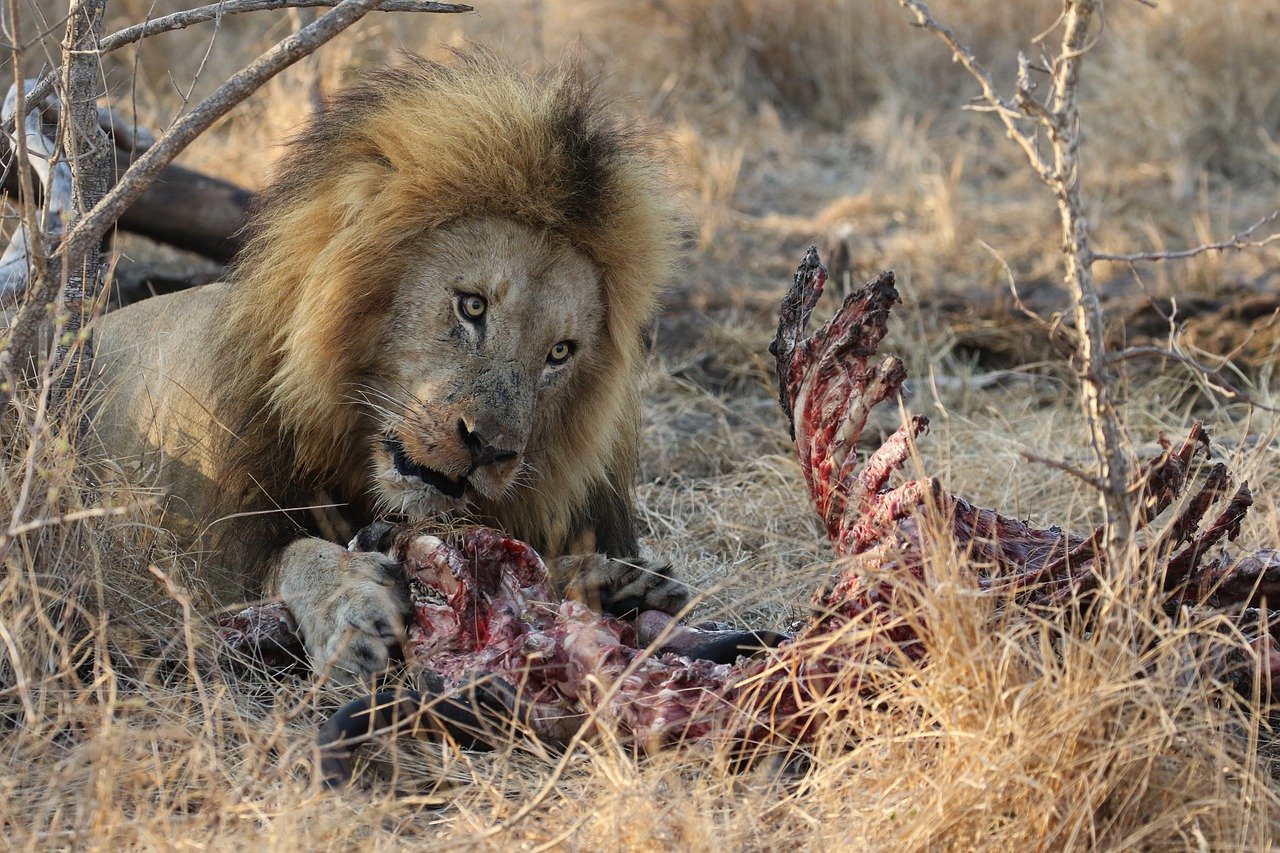
Remote Sensing in Conservation
Remote sensing technologies are revolutionizing the way conservationists monitor and manage our precious ecosystems. By utilizing satellites, aerial imagery, and other remote data collection methods, researchers can gather critical information without the need for invasive ground surveys. This is akin to having a bird's-eye view of the planet, allowing for real-time monitoring of wildlife populations, habitat changes, and environmental conditions. Imagine being able to track the health of a rainforest or the movements of endangered species from space! With remote sensing, this is not just a dream; it’s a reality that is transforming conservation efforts worldwide.
One of the most significant advantages of remote sensing is its ability to cover vast areas quickly and efficiently. Traditional methods of data collection can be time-consuming and labor-intensive, often requiring teams of researchers to trek through challenging terrains. In contrast, remote sensing allows for comprehensive data collection over large landscapes, providing a macro perspective that is essential for effective conservation strategies. For instance, satellite imagery can reveal changes in land use, deforestation rates, and even the impact of climate change on various ecosystems. This information is invaluable for making informed decisions about resource management and conservation priorities.
Additionally, remote sensing plays a crucial role in tracking biodiversity. By analyzing patterns in vegetation cover and land use, conservationists can identify critical habitats that require protection. This technology also aids in monitoring the effects of human activities, such as urban development and agriculture, on wildlife populations. The ability to visualize and analyze these changes through data helps stakeholders understand the urgent need for conservation initiatives.
To illustrate the impact of remote sensing in conservation, consider the following table that summarizes some key applications:
| Application | Description | Benefits |
|---|---|---|
| Wildlife Tracking | Monitoring animal movements and populations using satellite data. | Provides insights into migration patterns and habitat use. |
| Habitat Mapping | Creating detailed maps of ecosystems and their changes over time. | Helps identify areas needing protection or restoration. |
| Deforestation Monitoring | Tracking changes in forest cover using satellite imagery. | Enables timely responses to illegal logging and land conversion. |
In conclusion, remote sensing is a powerful tool in the conservation toolkit, enabling us to understand and protect our natural world more effectively than ever before. As technology continues to advance, the potential for remote sensing to enhance conservation efforts will only grow, paving the way for more sustainable interactions between humans and nature. The future of conservation is bright, and with the help of modern technologies, we can ensure that our planet remains vibrant and diverse for generations to come.
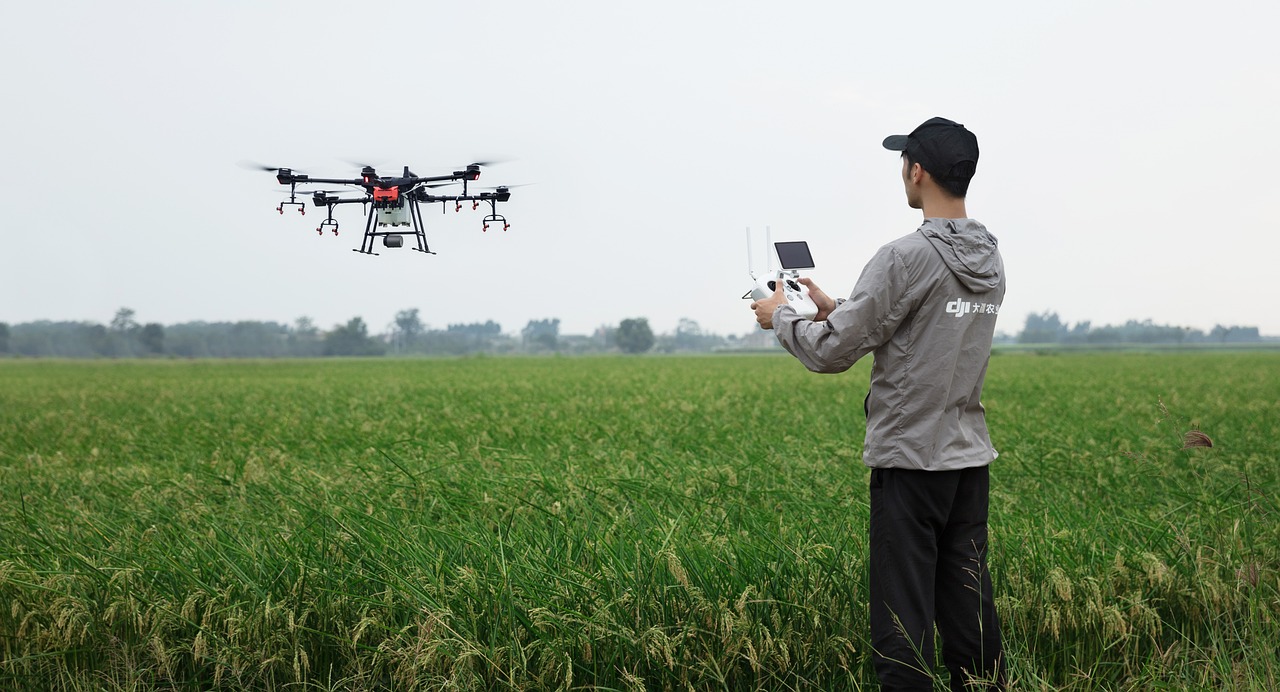
Drones for Wildlife Monitoring
Drones have emerged as a game-changing technology in the realm of wildlife monitoring, revolutionizing how researchers and conservationists gather data about ecosystems and their inhabitants. Imagine being able to soar above the treetops, capturing stunning aerial views of wildlife without disturbing their natural habitats. This is precisely what drones offer – a **bird's-eye view** that is not only efficient but also minimizes the human footprint on sensitive environments. With the capability to cover vast areas in a fraction of the time it would take traditional methods, drones are becoming indispensable tools for conservation efforts.
One of the most exciting aspects of using drones for wildlife monitoring is their ability to access hard-to-reach areas. Whether it's dense forests, rugged mountains, or remote islands, drones can navigate these challenging terrains with ease. This capability allows researchers to gather data on species that are often elusive or endangered, providing critical insights into their behavior, population dynamics, and habitat use. By utilizing drones, conservationists can conduct surveys and collect data that were previously difficult or impossible to obtain, leading to more informed decision-making and effective conservation strategies.
Furthermore, the technology behind drones has advanced significantly, enabling them to be equipped with high-resolution cameras and sensors that capture detailed imagery and data. This capability allows for the monitoring of not just the wildlife itself but also the health of their habitats. For instance, drones can be used to assess vegetation cover, track changes in land use, and even monitor the effects of climate change on various ecosystems. The data collected can be analyzed to identify trends and patterns, which can then inform conservation actions aimed at protecting these vital ecosystems.
However, the integration of drones into wildlife monitoring does come with its own set of challenges. Regulatory restrictions can limit where and how drones can be operated, and there are technical limitations related to battery life and payload capacity. Moreover, effective drone operation requires trained personnel who are skilled in both piloting the devices and interpreting the data collected. Despite these challenges, the benefits of using drones in conservation far outweigh the drawbacks, and ongoing advancements in technology are likely to address many of these issues in the future.
In summary, drones are transforming wildlife monitoring by providing innovative solutions that enhance data collection while minimizing disturbance to the environment. As technology continues to evolve, the potential applications for drones in conservation are boundless, paving the way for more effective biodiversity protection and sustainable practices.
- How do drones help in wildlife monitoring? Drones provide a unique aerial perspective, allowing researchers to gather data on wildlife populations and habitats without disturbing them. They can cover large areas quickly and efficiently.
- What type of data can drones collect? Drones can capture high-resolution images, monitor vegetation health, track animal movements, and assess environmental changes, among other data types.
- Are there regulations for using drones in conservation? Yes, there are various regulations that govern the use of drones, including where they can be flown and how they must be operated. It's essential for users to be aware of and comply with these regulations.
- Do I need special training to operate a drone for wildlife monitoring? Yes, operating a drone, especially for scientific purposes, typically requires training to ensure safety and effective data collection.
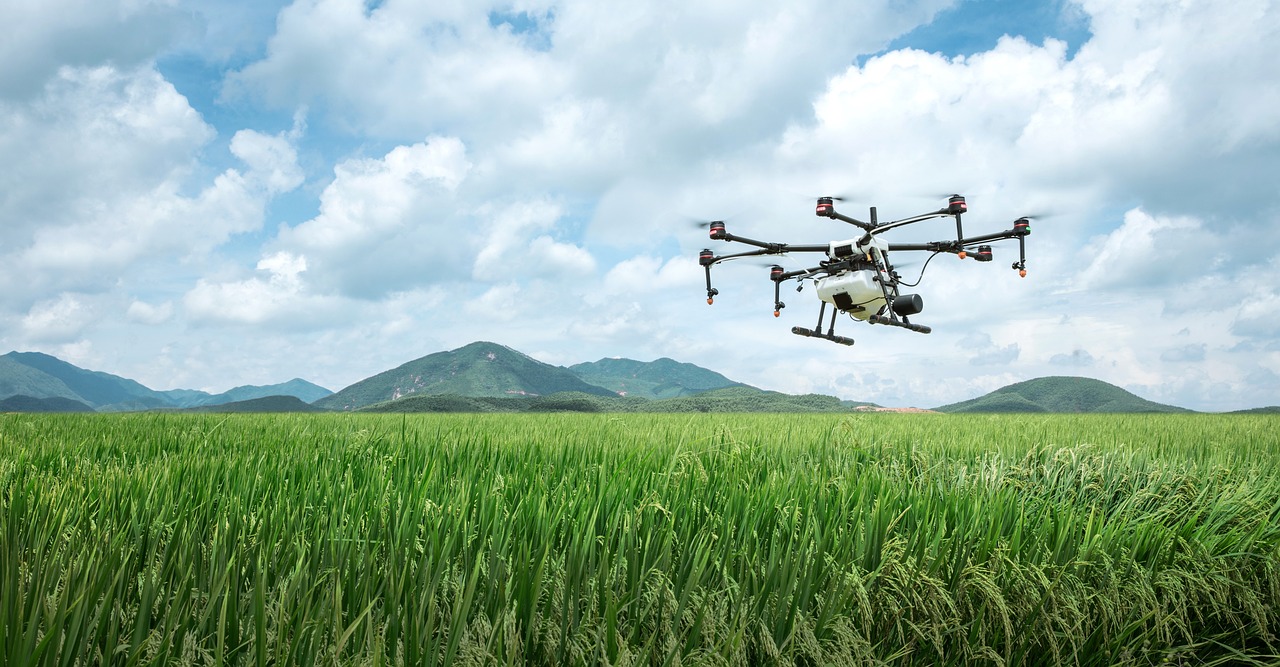
Advantages of Drone Technology
Drones have emerged as a game-changer in the field of conservation, bringing a multitude of advantages that traditional methods simply cannot match. Imagine being able to survey vast areas of land without ever stepping foot on them. This is one of the most remarkable benefits drones offer. By utilizing high-resolution cameras and advanced sensors, drones can capture detailed images and data that help conservationists understand the health of ecosystems in real-time.
One of the standout features of drone technology is its cost-effectiveness. Traditional methods of wildlife monitoring often require extensive manpower and resources, leading to high operational costs. In contrast, deploying a drone can significantly reduce these expenses. For instance, instead of hiring a team of researchers to conduct ground surveys, a single drone can cover the same area in a fraction of the time and cost. This efficiency not only saves money but also allows conservationists to allocate more resources to other critical areas of their work.
Moreover, drones can access hard-to-reach areas that are often challenging or dangerous for humans. Think about dense forests, rugged mountains, or remote wetlands—these environments can be treacherous and time-consuming to navigate on foot. Drones, however, can effortlessly glide over these landscapes, capturing vital data without disturbing wildlife or their habitats. This capability is especially crucial when monitoring endangered species, as it minimizes human interference while ensuring accurate data collection.
Another significant advantage is the ability to conduct frequent and repetitive monitoring. Conservation efforts often require ongoing observation to track changes over time. Drones can be deployed regularly to monitor specific areas, providing a continuous stream of data that helps identify trends and shifts in ecosystems. This capability is invaluable for assessing the impact of climate change, habitat destruction, or conservation initiatives. As a result, conservationists can make more informed decisions based on real-time data.
To illustrate the effectiveness of drone technology, consider the following table that highlights some of its key advantages:
| Advantage | Description |
|---|---|
| Cost-Effectiveness | Reduces operational costs compared to traditional methods. |
| Access to Remote Areas | Can survey hard-to-reach locations without human interference. |
| High-Resolution Imagery | Captures detailed images for thorough analysis. |
| Frequent Monitoring | Allows for regular data collection to track changes over time. |
In summary, the advantages of drone technology in conservation are profound. By combining efficiency, cost savings, and minimal environmental impact, drones are revolutionizing how we approach wildlife monitoring and ecosystem management. As we continue to explore the potential of these innovative tools, it's clear that they will play a crucial role in advancing conservation efforts worldwide.
- How do drones help in wildlife conservation? Drones provide high-resolution imagery and data collection capabilities, allowing conservationists to monitor ecosystems and wildlife populations with minimal human impact.
- What are the costs associated with using drones for conservation? While initial investment in drone technology can be significant, the overall operational costs tend to be lower than traditional monitoring methods, making it a cost-effective solution in the long run.
- Are there any legal restrictions on using drones for conservation? Yes, there are regulations in place that vary by country and region, which may require permits or adherence to specific guidelines when using drones for conservation purposes.

Case Studies of Drone Applications
When we think about the impact of drone technology on conservation, it's hard not to be amazed by the myriad of applications that have emerged. One standout example comes from the African elephant conservation efforts in Tanzania. Researchers have utilized drones equipped with high-resolution cameras to monitor elephant populations in the Selous Game Reserve. This area is vast and often difficult to navigate on foot, making traditional monitoring methods both time-consuming and invasive. By deploying drones, conservationists can gather crucial data on elephant movements and population dynamics without disturbing these majestic creatures. The result? A significant increase in the accuracy of data collection, which directly informs protective measures against poaching.
Another compelling case study is the use of drones in the Great Barrier Reef restoration projects in Australia. Here, drones are employed to assess coral health and monitor changes in reef ecosystems over time. By capturing aerial imagery, scientists can identify areas of coral bleaching and degradation, allowing for timely interventions. The beauty of this approach lies in its efficiency; rather than relying on divers to gather data, which can be both expensive and risky, drones can cover large areas quickly and safely. This not only conserves resources but also enhances the overall effectiveness of conservation strategies.
In the Americas, drones have been instrumental in monitoring the populations of endangered species, such as the California condor. Conservationists have used drones to track these birds' nesting sites and foraging behaviors, providing insights that were previously difficult to obtain. The ability to gather data without the presence of humans has minimized stress on the birds, leading to more reliable information on their habits and habitats. This approach has proven invaluable in crafting conservation policies aimed at increasing the condor population and ensuring their survival.
Moreover, the Amazon rainforest has seen the deployment of drones for mapping deforestation and illegal logging activities. By using drones equipped with thermal imaging technology, researchers can detect heat signatures from illegal activities, allowing for rapid response and intervention. This proactive approach not only helps in protecting vast expanses of forest but also aids in preserving the biodiversity that thrives within these ecosystems. The data collected through drones has been pivotal in advocating for stronger environmental policies and enforcement.
These case studies illustrate the transformative power of drone technology in conservation. They highlight how drones can enhance the precision and efficiency of monitoring efforts, ultimately leading to better-informed decisions that can protect vulnerable species and habitats. As we continue to explore the capabilities of drones, it’s clear that they are not just a technological novelty; they are a vital tool in the ongoing fight to preserve our planet's biodiversity.
- What are the main benefits of using drones in conservation?
Drones provide cost-effective, efficient, and non-invasive methods for monitoring wildlife and ecosystems. They can cover large areas quickly and gather high-resolution data without disturbing the environment.
- How do drones contribute to community engagement in conservation?
Drones can be used in community workshops to educate locals about conservation efforts. They allow communities to visualize changes in their environment and actively participate in monitoring efforts.
- Are there any regulations surrounding drone use in conservation?
Yes, drone usage is subject to regulations that vary by country. Conservationists must ensure compliance with local laws regarding airspace and wildlife protection to operate drones legally.
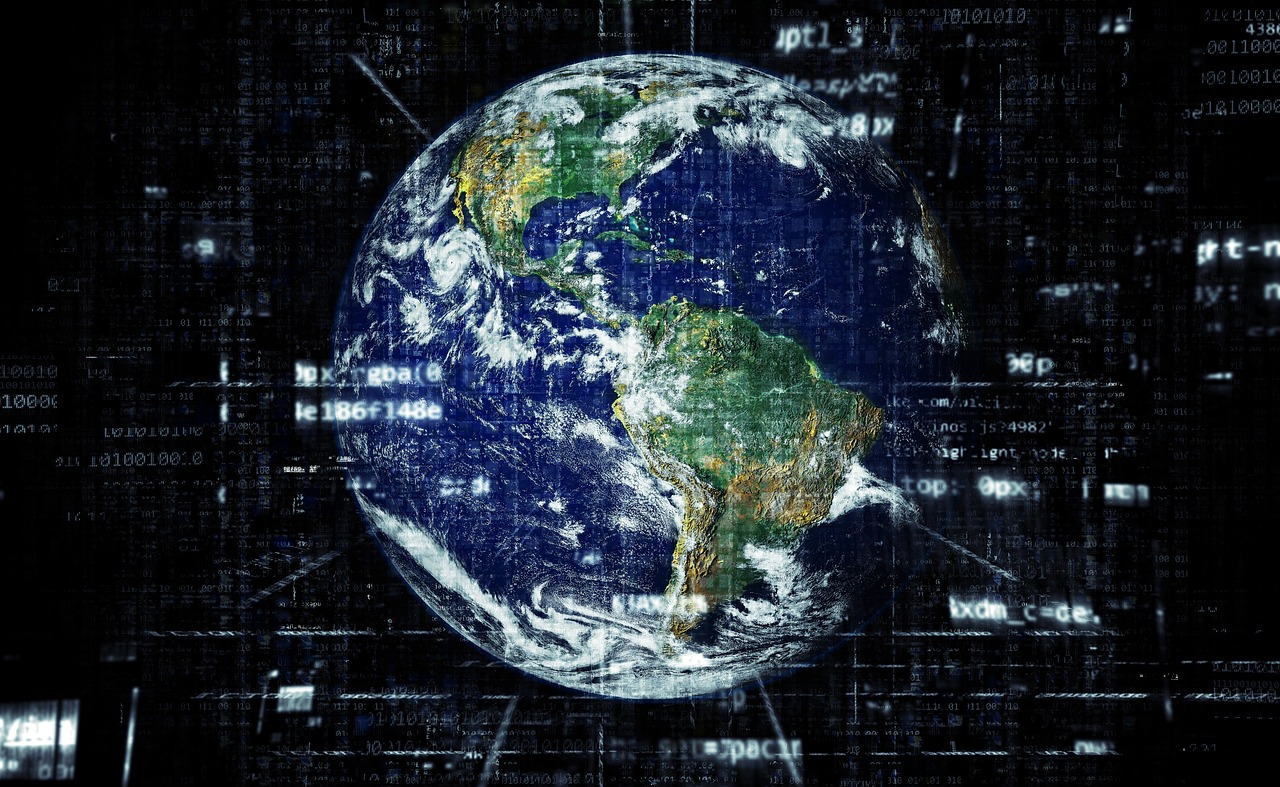
Challenges and Limitations
While drone technology has undoubtedly revolutionized conservation efforts, it's essential to acknowledge the that come with its use. One of the primary hurdles is the regulatory restrictions that vary from region to region. Many countries have stringent laws governing the use of drones, especially in protected areas where wildlife habitats are sensitive. These regulations can limit the operational scope of drones, making it difficult for conservationists to leverage their full potential.
Another significant challenge is the technical limitations of drone technology itself. Although drones are becoming more advanced, they still face issues such as limited battery life, which restricts flight time and the area that can be covered in a single mission. Additionally, adverse weather conditions can severely impact drone performance, leading to potential data loss or incomplete surveys. Furthermore, the quality of data collected can vary based on the type of drone and sensors used, which may not always meet the high standards required for rigorous scientific analysis.
Moreover, the operation of drones requires trained personnel who understand both the technology and the ecological context in which they are working. This need for specialized training can create barriers in regions where resources and expertise are scarce. As a result, many conservation organizations struggle to find qualified individuals who can effectively manage drone operations and interpret the data collected.
Finally, there is the risk of human interference. While drones are designed to minimize human impact on wildlife, their presence can still cause stress to animals, particularly in sensitive habitats. The challenge lies in balancing the need for data collection with the imperative of protecting wildlife from disturbance. To address these challenges, ongoing dialogue between conservationists, regulators, and technology developers is crucial. By working together, we can find innovative solutions that enhance the effectiveness of drone technology while safeguarding the ecosystems we aim to protect.
- What are the main advantages of using drones in conservation?
Drones provide cost-effective, efficient, and high-resolution data collection, allowing for better monitoring of wildlife and their habitats. - How do regulatory restrictions affect drone usage?
Regulations can limit where and how drones can be operated, particularly in protected areas, which can hinder conservation efforts. - What technical issues do drones face?
Drones can experience limited battery life, performance issues in adverse weather, and varying data quality based on the equipment used. - Why is trained personnel necessary for drone operations?
Effective drone operation and data interpretation require specialized skills and knowledge of both technology and ecological contexts. - Can drones disturb wildlife?
Yes, while drones aim to minimize human impact, their presence can still stress animals, especially in sensitive habitats.
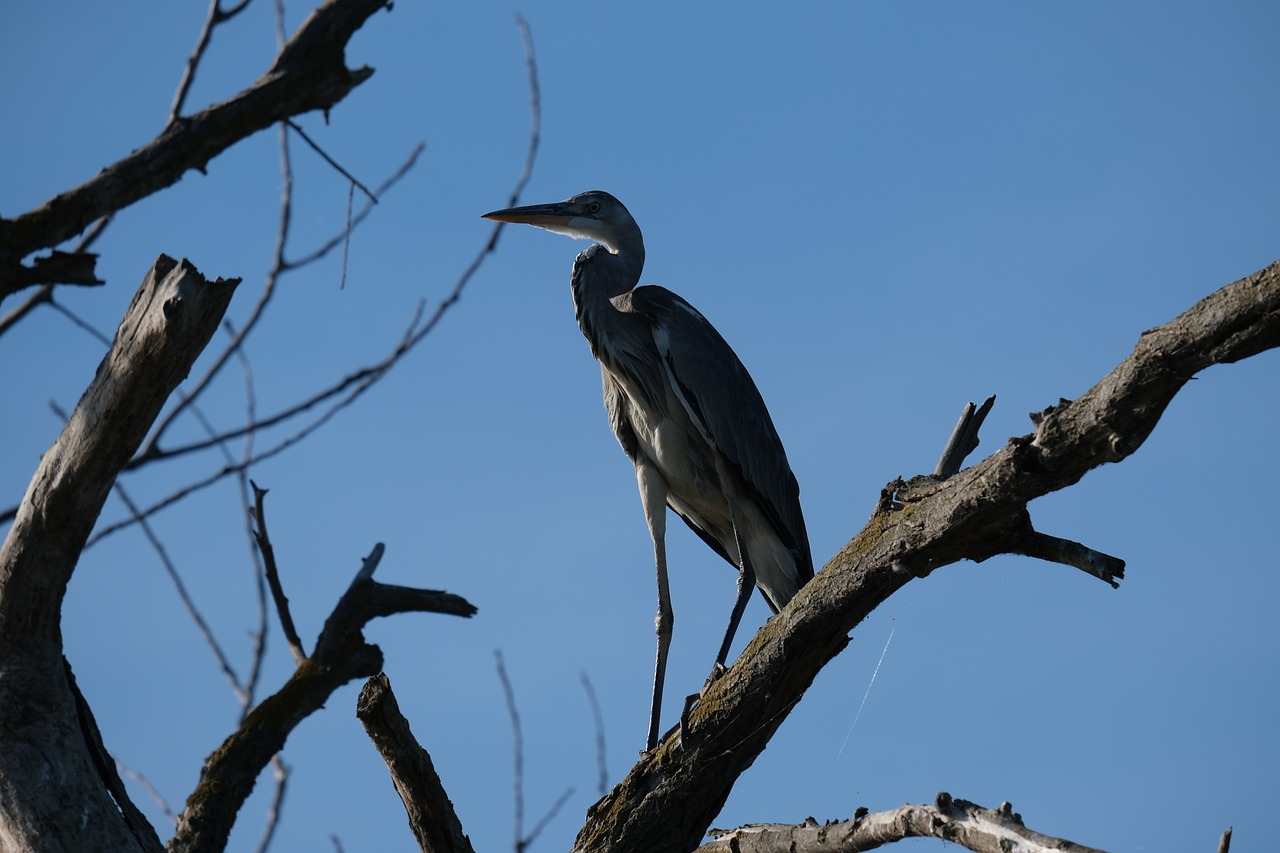
Integrating AI in Conservation Efforts
Artificial Intelligence (AI) is no longer just a buzzword; it's a transformative force reshaping the landscape of conservation. Imagine having a digital assistant that can analyze vast amounts of data faster than any human could. That's precisely what AI brings to the table! By leveraging machine learning algorithms, conservationists can sift through mountains of information, uncovering patterns and insights that were previously hidden. This capability is crucial for understanding biodiversity and ecosystem dynamics, providing a clearer picture of the challenges we face.
One of the most exciting applications of AI in conservation is in the realm of species identification. With the help of image recognition technology, AI can analyze photographs taken in the wild to identify species instantly. This not only saves time but also increases accuracy, allowing researchers to focus on more pressing issues, like habitat preservation or anti-poaching efforts. For instance, projects utilizing AI have successfully identified endangered species in remote locations, providing invaluable data for conservation strategies.
Moreover, AI can enhance predictive modeling by analyzing environmental data to forecast changes in ecosystems. This is vital for proactive conservation efforts. By predicting potential threats, such as climate change impacts or habitat loss, conservationists can implement measures to mitigate these risks before they escalate. For example, AI-driven models can simulate various scenarios, helping stakeholders make informed decisions about resource allocation and management strategies.
In addition to these technical applications, AI also plays a significant role in engaging the public and raising awareness. Through social media and mobile applications, AI can analyze user interactions and feedback, tailoring conservation messages to resonate with different audiences. This personalized approach can significantly increase community involvement and support for conservation initiatives. Imagine receiving a notification about a local wildlife sighting or a conservation event, tailored just for you—this is the power of AI in action!
However, integrating AI into conservation efforts is not without its challenges. Concerns about data privacy, the need for high-quality data, and the potential for bias in algorithms must be addressed to ensure that AI serves all stakeholders equitably. Additionally, there's a pressing need for training and resources to equip conservationists with the skills necessary to harness AI effectively.
In summary, the integration of AI in conservation efforts is not just a trend; it's a necessity for the future of our planet. By embracing this technology, we can enhance our understanding of ecosystems, engage communities more effectively, and ultimately drive impactful conservation strategies. As we continue to innovate and adapt, the synergy between AI and conservation could very well be the key to preserving our planet's biodiversity for generations to come.
- What is AI's role in conservation? AI helps analyze large datasets, identify species, and predict environmental changes to enhance conservation efforts.
- How does AI improve species identification? AI uses image recognition technology to quickly and accurately identify species from photographs taken in the wild.
- What are the challenges of using AI in conservation? Challenges include data privacy concerns, the need for high-quality data, and potential biases in algorithms.
- Can AI engage communities in conservation? Yes, AI can tailor conservation messages through social media and mobile apps, increasing community involvement.
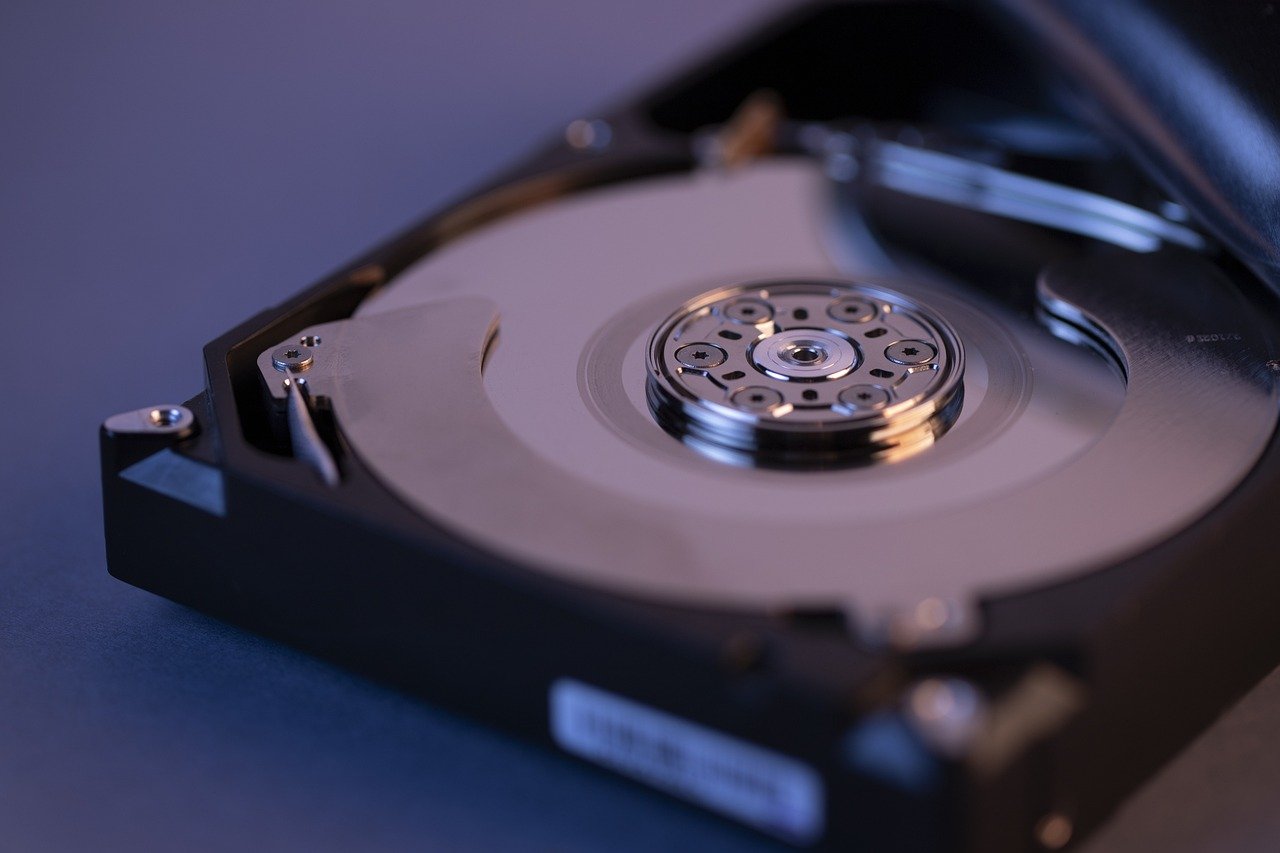
Mobile Apps for Community Engagement
In today's digital age, mobile applications have become a powerful tool for fostering community involvement in conservation efforts. Imagine having the ability to connect with nature and contribute to its preservation right from your pocket! These apps not only facilitate reporting wildlife sightings but also empower users to share valuable information about their local ecosystems. This level of engagement transforms ordinary citizens into active participants in conservation, creating a sense of ownership and responsibility toward the environment.
One of the most significant advantages of mobile apps is their accessibility. With smartphones in nearly everyone's hands, people can easily download applications that promote conservation initiatives. For instance, apps like iNaturalist and Seek allow users to document and share their observations of flora and fauna, contributing to citizen science projects that help researchers gather essential data. This collective effort enhances our understanding of biodiversity and informs conservation strategies.
Moreover, these apps often feature interactive elements that engage users in fun and educational ways. Through gamification, users can earn points or badges for participating in conservation activities, creating a friendly competition that encourages more people to get involved. It’s like turning conservation into a game where everyone can be a hero! The more people engage, the more data is collected, leading to better outcomes for wildlife and habitats.
To illustrate the impact of mobile apps on community engagement, consider the following table that outlines some popular conservation apps and their features:
| App Name | Features | Purpose |
|---|---|---|
| iNaturalist | Species identification, community sharing | Document and share wildlife observations |
| Seek | Real-time identification, educational resources | Encourage exploration of nature |
| BirdTrack | Bird sighting reports, data collection | Monitor bird populations |
| Marine Debris Tracker | Report marine debris, map pollution | Reduce ocean pollution |
As we can see, these applications are not just tools; they are bridges connecting communities to the natural world. By engaging local populations, we harness their knowledge and passion for conservation, leading to more sustainable practices. When communities feel involved, they are more likely to advocate for local conservation efforts, resulting in a ripple effect that benefits the entire ecosystem.
However, it's essential to recognize that while mobile apps are a fantastic way to engage communities, they are most effective when combined with traditional conservation methods. The synergy between technology and on-the-ground initiatives can amplify the impact of conservation efforts. For example, local workshops and educational programs can complement app usage, ensuring that users not only participate digitally but also understand the importance of their contributions.
In conclusion, mobile apps are revolutionizing the way communities engage with conservation. They break down barriers, making it easier for people to participate and contribute to the protection of our planet. As these technologies continue to evolve, so too will our ability to foster a more sustainable future, one app at a time.
- How do mobile apps help in conservation? Mobile apps enable users to report wildlife sightings, participate in citizen science projects, and access educational resources, thus enhancing community engagement in conservation efforts.
- Are there any costs associated with using conservation apps? Most conservation apps are free to download and use, although some may offer premium features for a fee.
- Can anyone use these apps? Absolutely! Mobile apps for conservation are designed for everyone, from casual nature enthusiasts to professional researchers.

Popular Conservation Apps
In today's digital age, mobile applications have emerged as powerful tools in the realm of conservation. These apps not only serve as a bridge connecting conservationists with the public but also empower individuals to take action in preserving our planet. Imagine walking through a lush forest and being able to identify the various species of plants and animals around you with just a few taps on your smartphone. This is the magic of conservation apps!
One standout app is iNaturalist, which allows users to document and share their wildlife observations. By simply taking a photo of a plant or animal, users can upload their findings and contribute to a global database. This app fosters a sense of community as users can interact, identify species, and participate in local biodiversity projects. It’s like having a personal field guide right in your pocket!
Another noteworthy app is Seek by iNaturalist. This app takes user engagement a step further by using image recognition technology to identify species in real-time. Whether you’re in your backyard or on a hiking trail, Seek encourages exploration and learning about biodiversity. Plus, it gamifies the experience by allowing users to earn badges for their observations, making conservation feel like an adventure.
Additionally, there is BirdsEye, which is tailored for bird watchers. This app provides real-time information about bird sightings nearby, helping enthusiasts locate rare species and contributing valuable data to conservation efforts. It’s not just about spotting birds; it’s about creating a network of bird lovers who can share insights and observations, ultimately aiding in the protection of avian habitats.
Moreover, Marine Debris Tracker is an app that allows users to report and track marine debris in their local waters. By collecting data on trash in oceans and waterways, users contribute to a larger effort aimed at understanding and combating pollution. This app illustrates how technology can turn everyday citizens into active participants in environmental stewardship.
Incorporating these apps into conservation efforts not only enhances awareness but also strengthens community involvement. The power of collective action cannot be overstated; when individuals come together to share their observations and data, they create a more comprehensive understanding of local ecosystems. As we embrace these technologies, we pave the way for a more informed and engaged society ready to tackle the pressing environmental challenges of our time.
Q1: How can I get started with conservation apps?
A1: Simply download the app of your choice from your device's app store, create an account, and start exploring your environment! Most apps have user-friendly interfaces and tutorials to help you navigate.
Q2: Are these apps free to use?
A2: Many conservation apps are free, but some may offer premium features or in-app purchases. Always check the app's details before downloading.
Q3: Can I use these apps for educational purposes?
A3: Absolutely! Many educators use these apps to teach students about biodiversity, ecology, and conservation practices in a hands-on manner.
Q4: How do these apps contribute to conservation efforts?
A4: By collecting data and observations from users, these apps help researchers and conservationists track species populations, monitor environmental changes, and engage the community in conservation initiatives.

Impact of Community Participation
Community participation is a game changer in conservation efforts, acting as the bridge between scientific research and local knowledge. When communities engage in conservation initiatives, they bring a wealth of experience and insight that can significantly enhance the effectiveness of these programs. Imagine a local fisherman who knows the seasonal patterns of fish migration better than any scientist—this kind of knowledge is invaluable. By empowering communities, conservationists can leverage this local expertise to create more tailored and effective strategies that resonate with the people who live and work in these ecosystems.
Moreover, community participation fosters a sense of ownership and responsibility. When locals are involved in conservation, they are more likely to care about the outcomes. This can lead to a ripple effect, where one person's commitment inspires others to join the cause. For instance, community-led initiatives have been shown to reduce poaching rates and illegal logging significantly. By participating in these efforts, community members not only protect their natural resources but also improve their livelihoods. They often develop sustainable practices that benefit both the environment and their economic well-being.
In many cases, technology plays a crucial role in facilitating this participation. For example, mobile apps allow community members to report wildlife sightings or illegal activities, providing real-time data that can be used to inform conservation strategies. These tools not only make it easier for locals to engage but also help conservationists gather critical information that might otherwise go unnoticed. The collective data can reveal trends and patterns that are essential for understanding and protecting biodiversity.
To illustrate the impact of community participation, consider the following table that highlights successful case studies:
| Case Study | Location | Outcome |
|---|---|---|
| Community-Based Forest Management | Philippines | Reduced deforestation rates by 30% |
| Marine Protected Areas | Belize | Increased fish populations by 50% |
| Wildlife Monitoring Programs | Kenya | Decreased poaching incidents by 40% |
As we can see from these examples, the outcomes of community engagement in conservation can be profound. Not only do these initiatives lead to tangible environmental benefits, but they also foster a sense of community pride and collective responsibility. When individuals see the positive effects of their actions, it strengthens their commitment to sustainable practices. This is why it is crucial for conservationists to prioritize community involvement in their strategies.
In conclusion, the impact of community participation in conservation is multifaceted and far-reaching. By harnessing local knowledge, fostering ownership, and utilizing technology, communities can play an essential role in protecting our planet's biodiversity. As we move forward, it is imperative that we continue to engage and empower communities in conservation efforts to ensure a sustainable future for all.
- Why is community participation important in conservation? Community participation is crucial because it leverages local knowledge, fosters ownership, and leads to more effective conservation strategies.
- How can technology facilitate community engagement? Technology, such as mobile apps, allows community members to report wildlife sightings and illegal activities, providing valuable real-time data for conservationists.
- What are some successful examples of community-led conservation? Examples include community-based forest management in the Philippines and marine protected areas in Belize, which have shown significant positive outcomes.
Frequently Asked Questions
- What is remote sensing and how does it contribute to conservation?
Remote sensing involves collecting data about the Earth's surface using satellite or aerial imagery. It allows conservationists to monitor ecosystems and wildlife populations from afar, providing critical insights that inform decision-making and resource management strategies. This technology helps in tracking changes in land use, habitat loss, and the health of various species, ultimately aiding in the preservation of biodiversity.
- How are drones used in wildlife monitoring?
Drones are revolutionizing wildlife monitoring by enabling researchers to access hard-to-reach areas without disturbing sensitive habitats. They can capture high-resolution images and gather data that would be difficult to collect on foot. This technology is particularly useful for tracking endangered species and mapping their habitats, helping conservationists make informed decisions based on accurate, real-time data.
- What are the advantages of using drone technology in conservation?
The advantages of drone technology in conservation are numerous. Drones are cost-effective, efficient, and capable of capturing detailed imagery that aids in the analysis of ecosystems. They minimize human impact on wildlife, allowing for less intrusive research methods. Additionally, drones can cover large areas quickly, making them ideal for monitoring vast and remote landscapes.
- Are there any challenges associated with drone technology in conservation?
Yes, despite their benefits, drone technology faces several challenges. Regulatory restrictions can limit where and how drones can be used. Technical limitations, such as battery life and data processing capabilities, can also pose issues. Furthermore, trained personnel are needed to operate these devices effectively, which can be a barrier for some conservation organizations.
- How is artificial intelligence (AI) used in conservation efforts?
AI is becoming increasingly important in conservation as it enables the analysis of large datasets to better understand biodiversity and ecosystem dynamics. By processing complex data, AI can help identify patterns, predict changes, and provide insights that enhance conservation strategies. This technology supports decision-making processes, making them more efficient and effective.
- What role do mobile apps play in community engagement for conservation?
Mobile apps are fostering community involvement in conservation by providing platforms for reporting wildlife sightings, sharing information, and promoting local initiatives. These tools empower citizens to contribute to conservation efforts, making it easier for them to engage with and support their local environment. Community participation through mobile technology has proven to lead to more sustainable practices and better outcomes.
- Can you give examples of popular conservation apps?
Several mobile apps have gained popularity among conservationists and the public. Apps like iNaturalist and eBird allow users to document and share wildlife sightings, contributing to citizen science. Other apps provide educational resources and tools to promote awareness of environmental issues, helping to mobilize community action for conservation.
- What is the impact of community participation on conservation efforts?
Engaging communities in conservation efforts has a significant impact. Local knowledge and participation can lead to more effective and sustainable practices. When communities are involved, they are more likely to take ownership of conservation initiatives, resulting in better protection of natural resources and a stronger commitment to preserving biodiversity.



















